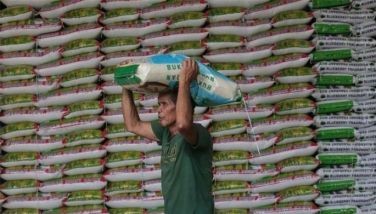Unemployment rate eases to 7.4% in October

MANILA, Philippines — The number of jobless Filipinos declined in October as restrictions were loosened, but many are still looking for additional hours of work as quality jobs remain a challenge due to the pandemic.
The labor market saw some respite in October as the government downgraded the alert level in Metro Manila and several other provinces amid declining COVID-19 cases.
The Philippine Statistics Authority (PSA) said the unemployment rate eased to 7.4 percent from 8.9 percent in September, which was the highest for the year so far.
This is equivalent to some 3.5 million jobless Filipinos, an improvement from the 4.25 million unemployed the previous month.
But even with the drop in unemployment, the bigger concern is the underemployment rate, pertaining to the proportion of workers looking for more hours of work.
Underemployment went up to 16.1 percent or 7.04 million Filipinos from 14.2 percent or 6.18 million in September.
This means that nearly 900,000 Filipinos are already working, but are still on the lookout for either additional work or extra work hours to earn adequate income.
The average weekly hours of work of an employed person also decreased to 39.7 hours from 40.2 hours.
Union Bank of the Philippines chief economist Ruben Carlo Asuncion said part-time jobs that have grown in the past months.
“Even as full time jobs may have recovered, more people in the labor force still need more work hours simply because they are not full time,” he said.
He added that jobs available right now are still not of quality, as some firms are testing the waters due to the continuing pandemic and the uncertainty of policies amid the upcoming May 2022 polls.
Research and advocacy group IBON Foundation, for its part, said the latest labor force data only showed the jobs market is struggling to recover.
IBON executive director Sonny Africa said the additional employed Filipinos are actually crowding into hugely informal and low-earning jobs.
“Vaccination, which is still slow, and reopening are not enough to fix economic scarring of households losing jobs, incomes and savings, and of at least 100,000 micro, small and medium enterprises closed by the government’s over-reliance on protracted lockdowns,” Africa said.
Asuncion noted that the risks of new variants, such as the Omicron, would still pose challenges in job creation and job recovery in the country.
Duterte’s economic team, however, remains optimistic, saying the government is on the right track to a strong and early recovery.
“The latest labor force data affirmed the soundness of the government’s push to safely reopen the economy, restore employment, and manage the spread of COVID-19,” the economic team said in a statement.
Meanwhile, the country’s labor force participation rate or those Filipinos aged 15 years and above declined to 62.6 percent of the total working age population from 63.3 percent.
This is equivalent to around 47.33 million economically active Filipinos, whether employed or looking for work, a decrease from the 47.85 million in September.
Nonetheless, employment creation improved as 234,000 more Filipinos were able to find work in the past month. This brings total employment to 1.3 million above pre-pandemic levels.
National statistician Dennis Mapa reiterated that the relaxation of restrictions was evident as unemployment decreased.
Mapa said the bigger effect of the downgrade would be seen in November, when the country shifted to alert level two.
Meanwhile, the biggest driver of the employment gain was wholesale and retail trade at 1.32 million.
Other industries that showed the largest increase in job creation include agriculture and forestry at 990,000, manufacturing at 297,000, public administration and defense at 287,000, and other service activities at 239,000.
Decreases, on the other hand, were recorded in education, financial and insurance activities, electricity and gas, information and communication, and activities of extraterritorial organizations and bodies.
Workers are grouped into the three sectors, namely, agriculture, industry, and the services sector. Those in the services sector comprised most of the employed persons, accounting for 57.6 percent share during the month.
Services sector was followed by agriculture with 24.6 percent share while the industry sector accounted for the smallest share of 17.8 percent. – Louise Maureen Simeon
- Latest
- Trending



























